Search result

OnePlus is working on the next device in the OnePlus 8 series after OnePlus 7T and OnePlus 7T Pro. As per reports, the OnePlus 8 Pro is already in the development stage, which means that the design may or may not be finalized yet. Recently, there were some new leaked images of the alleged OnePlus 8 Pro, reaffirming the design. The OnePlus 8 Pro will have a noticeable difference in the design as compared to its predecessor. The management at OnePlus has already said that they will be working on exciting camera features and the leaked images justify the claim.
The leaked diagram shows that the device will come with four camera lens on the rear side. This will be the first phone by the company to have four cameras on the backside. The OnePlus 7 Pro comes with three cameras on the rear side with the primary being a 48MP image sensor and a single image sensor on the front. The extra camera on the OnePlus 8 Pro is likely a ToF sensor.
Another leak suggests that the upcoming flagship device will be available in two variants. One version appears with a single punch-hole camera with the second device that will be launched with a punch-hole display. There is no clarity for now but it should likely be the OnePlus 8 with single punch-hole while the model with two punch-hole cameras. The fingerprint sensor could be an in-screen display as the diagram doesn't show any rear-mounted fingerprint reader. The display will be similar to its predecessor with curved design and 90Hz fresh rate. We will be seeing the OnePlus 8 and 8 Pro around the first quarter of the next year. This is only the expected and rumored date which isn't confirmed by the official sources yet. Stay tuned for more information on the OnePlus 8 series.
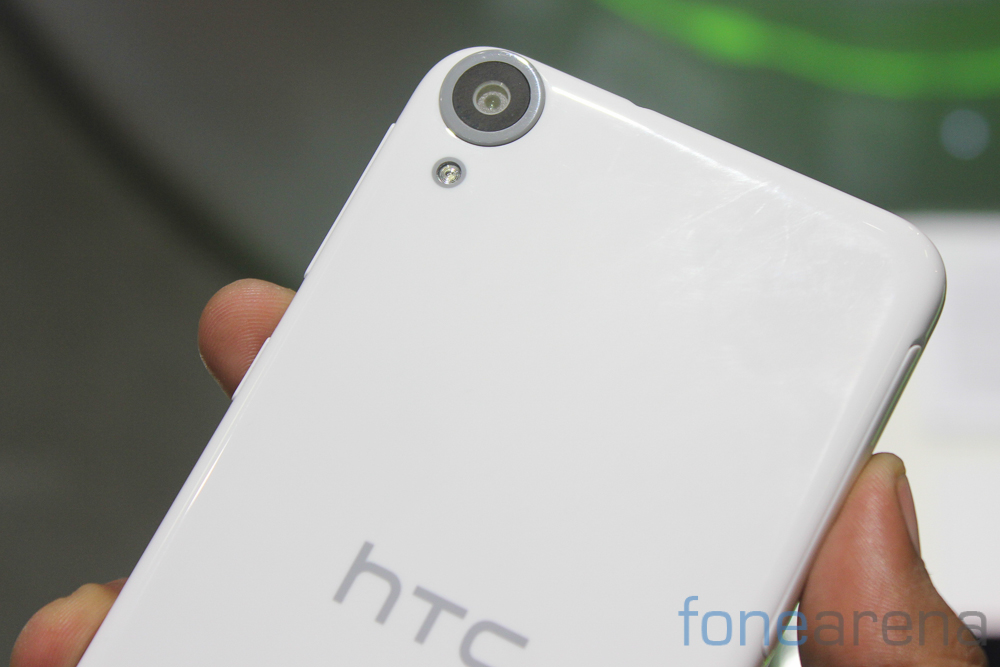
A rumor about an upcoming HTC device from the desire family, that will be called the "HTC Desire Eye" has been not been confirmed yet but it seems logical. If HTC will release the "M8 Eye" it should release another mid-range device of the same type, and the "Desire Eye" is the one.
HTC Desire Eye is tipped to pack a 5.2" 1080p display and run on the powerful Snapdragon 801 chipset with a quad-core Krait 400 processor at 2.3GHz and 2GB RAM.

The most interesting feature is the camera department of the HTC Desire Eye a 13MP front Selfie Camera coupled with a dual-LED front-flash and a 13MP rear camera. This should be quite interesting combo and a tough competitor for the upcoming Oppo N3.
The rest of the tipped specs include 32GB internal storage, a 2,400 mAh battery and IPX7 certification for water resistance. The Desire Eye will run on Android OS with Sense 6 UI with Eye camera app on top of it.
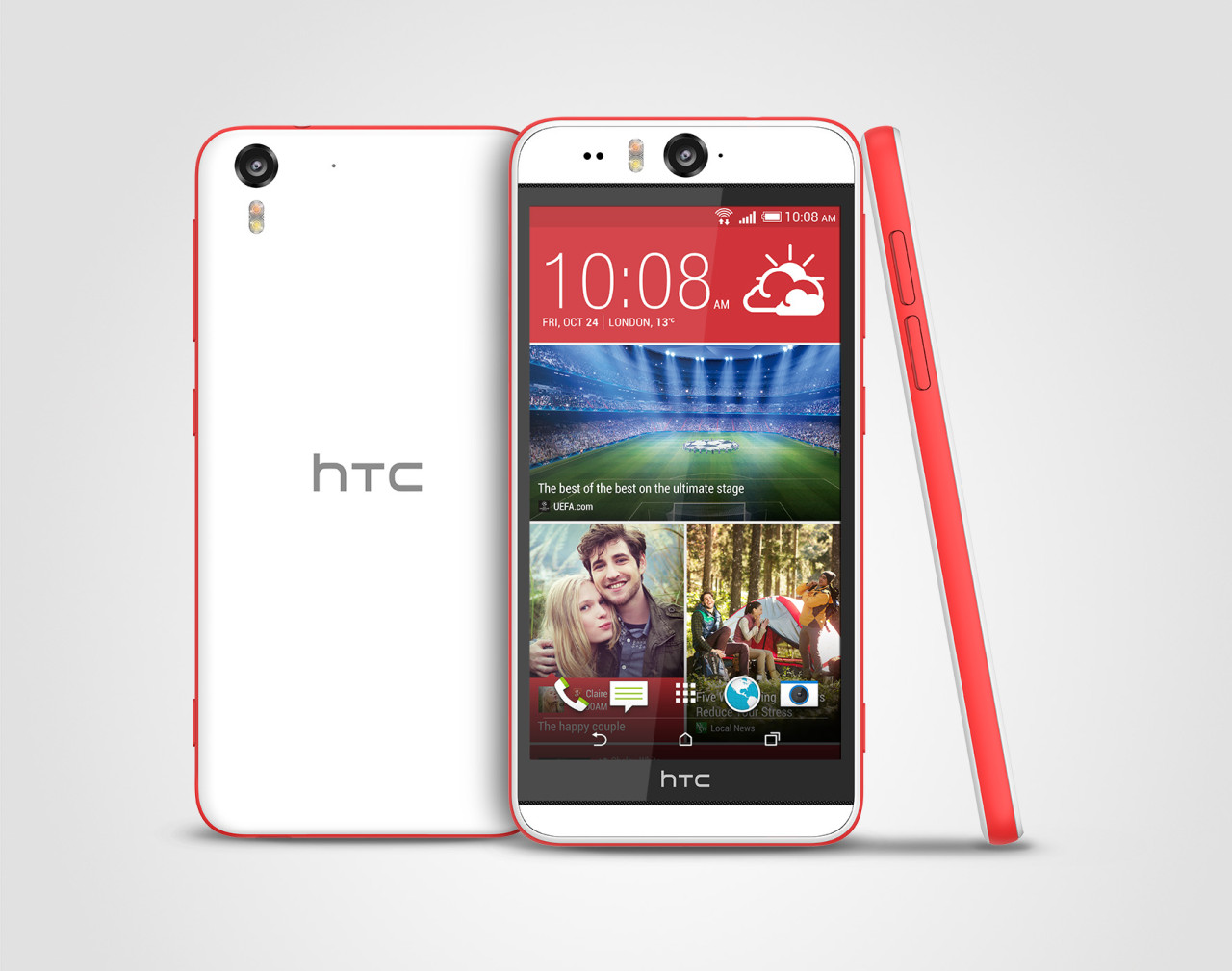
Yesterday, HTC released a new device called HTC Desire Eye. This is the first Smartphone with an HTC Eye 13MP front-facing camera and flash for amazing selfies, the Desire Eye also packs a 13MP rear-camera with flash too.
Both cameras can record 1080p@30fps video. The one on the back has an f/2.0 aperture and a 28mm lens, while the one on the front has a wider 20mm lens but a smaller f/2.2 aperture.
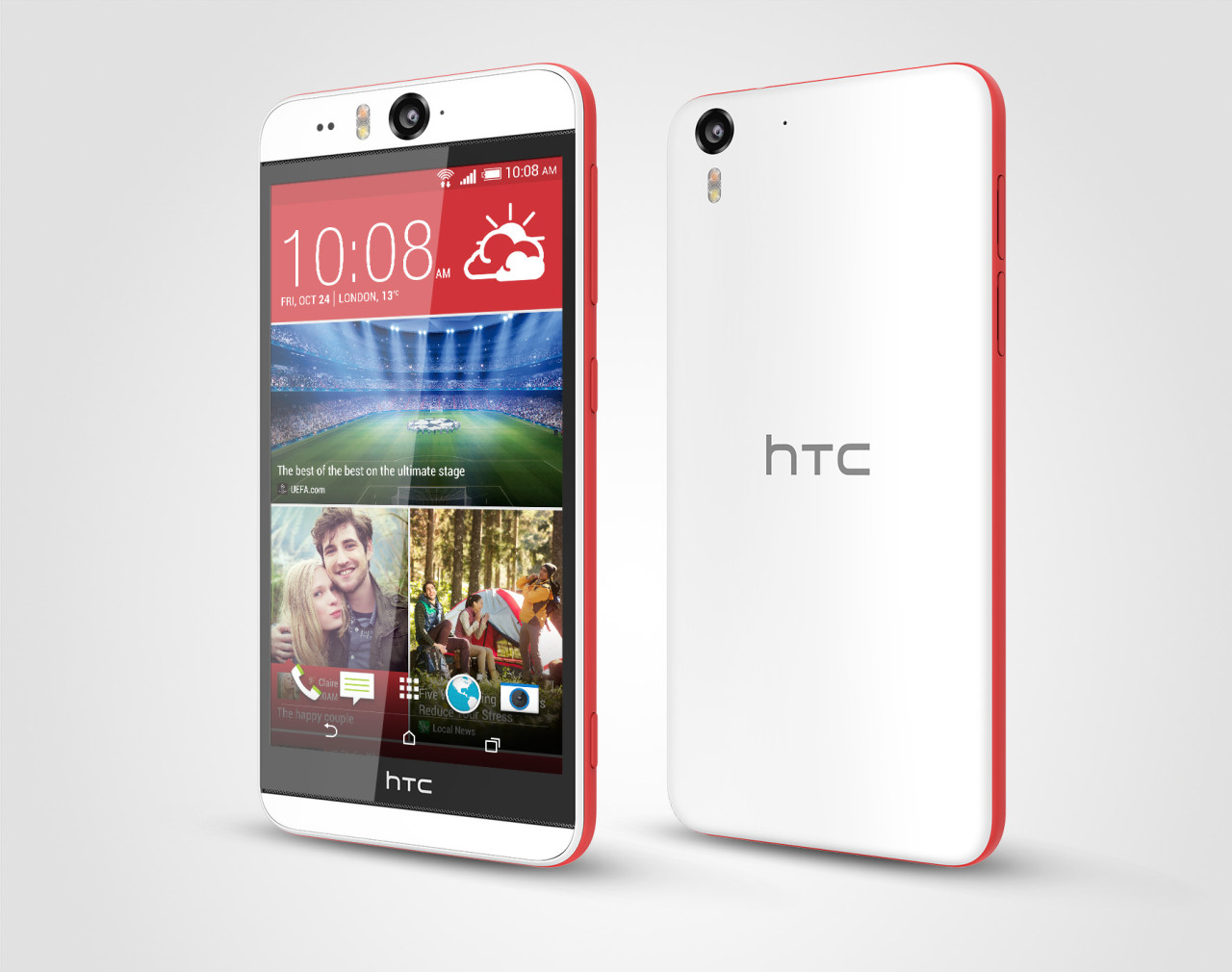
HTC's trademark BoomSound speakers are harder to see but still on board. They flank the larger 5.2" screen of the HTC Desire Eye, an LCD with 1080p resolution. Besides selfie camera and screen size, the Eye also trumps the One E8 with an IPX7 rating water resistance up to 1m of water for half an hour.

The Desire Eye carries much better specs than most of the Desire family. It's powered by a Snapdragon 801 chipset with 2GB RAM and runs Android 4.4 with the latest Sense software and two camera-centric apps Eye Experience and the new Zoe.
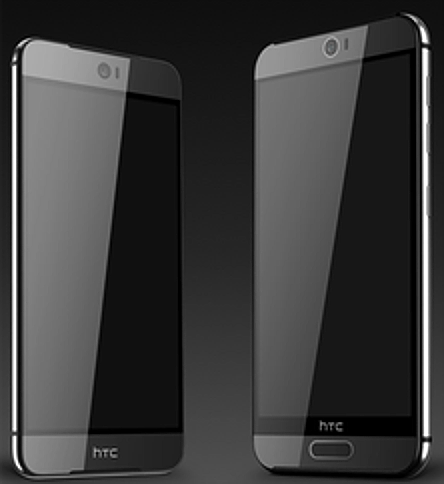
A trusted insider report close to HTC has leaked info about the HTC One (M9) aka Hima Main camera sensor. He says with certainty the new One (M9) will feature a DUAL 20MP camera sensors (20MP + 20MP) at the back, a dual setup similar to the one introduced with the previous One (M8) flagship. The flash should be dual-tone dual-LED flash, just like before.
The insider source also confirms HTC won't be giving up on the UltraPixel technology and it will use a 4 UltraPixel sensor for the front camera, intended for selfies
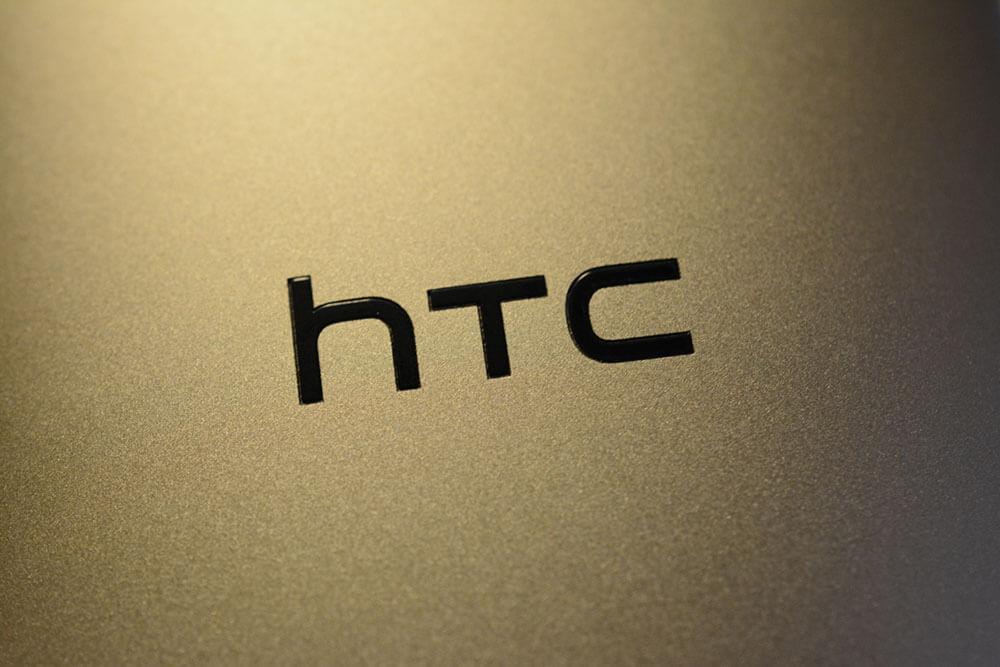
HTC One (M9) is expected to pack a 5" 1080p display and run on the latest generation Snapdragon 810 chipset with an octa-core processor, Adreno 430 graphics and 3GB of RAM. The flagship will powered by Android 5.0.2 Lollipop with HTC Sense 7.0 UI.
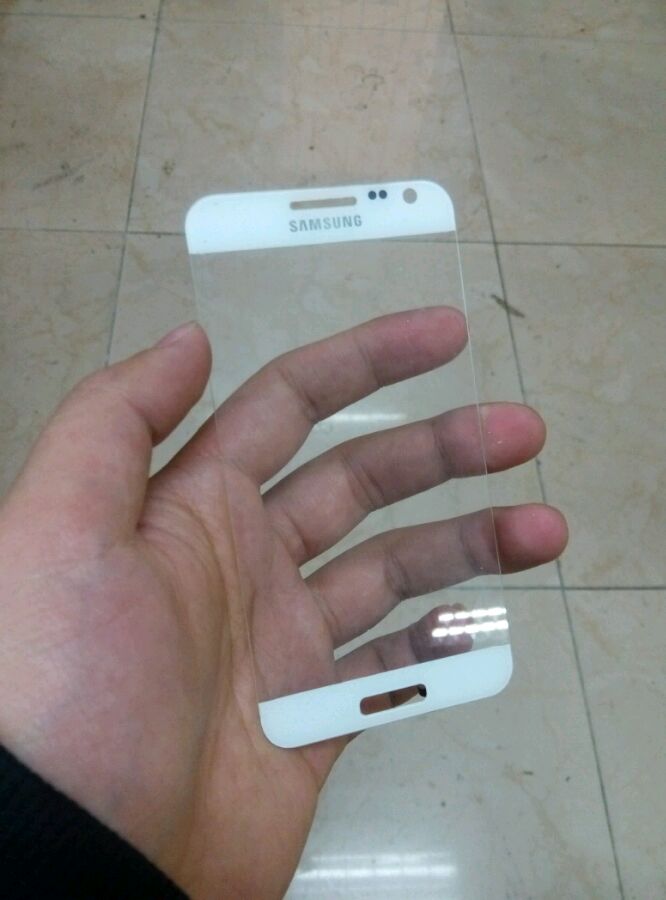
Speculations regarding the Samsung Galaxy S7 has been piling up lately, although the mobile enthusiasts are not expecting to have a look at the smartphone in CES next week in Las Vegas. But it is expected that the S7 would be unveiled on February 21st during the Samsung Unpacked 2016 event in Barcelona. Incidentally this day is just before the kick off of the Mobile World Congress expo. Now it seems that the front panel for the Samsung Galaxy S7 has leaked online.
Looking at the leaked panel, the home button appears to be longer. This is in sync with the leaked images of the Galaxy S7 and Samsung Galaxy S7 Plus that depicted a rectangular home button. In addition to this, the panel shows that the sensors, power button and volume rockers will make the right side of the device more attractive. Right now it can't be confirmed that the panel is actually for the Galaxy S7, so take this with a pinch of salt, especially since sensors placed at the top doesn't match with the other previously leaked images.
The Galaxy S7 is supposed to boast a 5.2-inch screen with a 1440 x 2560 QHD display. Backed by 4GB of RAM, the device will also have 32GB/64GB of storage. A 20MP snapper will be made available at the back of the smartphone. It will be powered by the Exynos 8890 SoC in most of the countries except in the US and China. In those two countries, the Snapdragon 820 chipset will be used to power the S7 along with quad-core CPU and the Adreno 530 GPU.
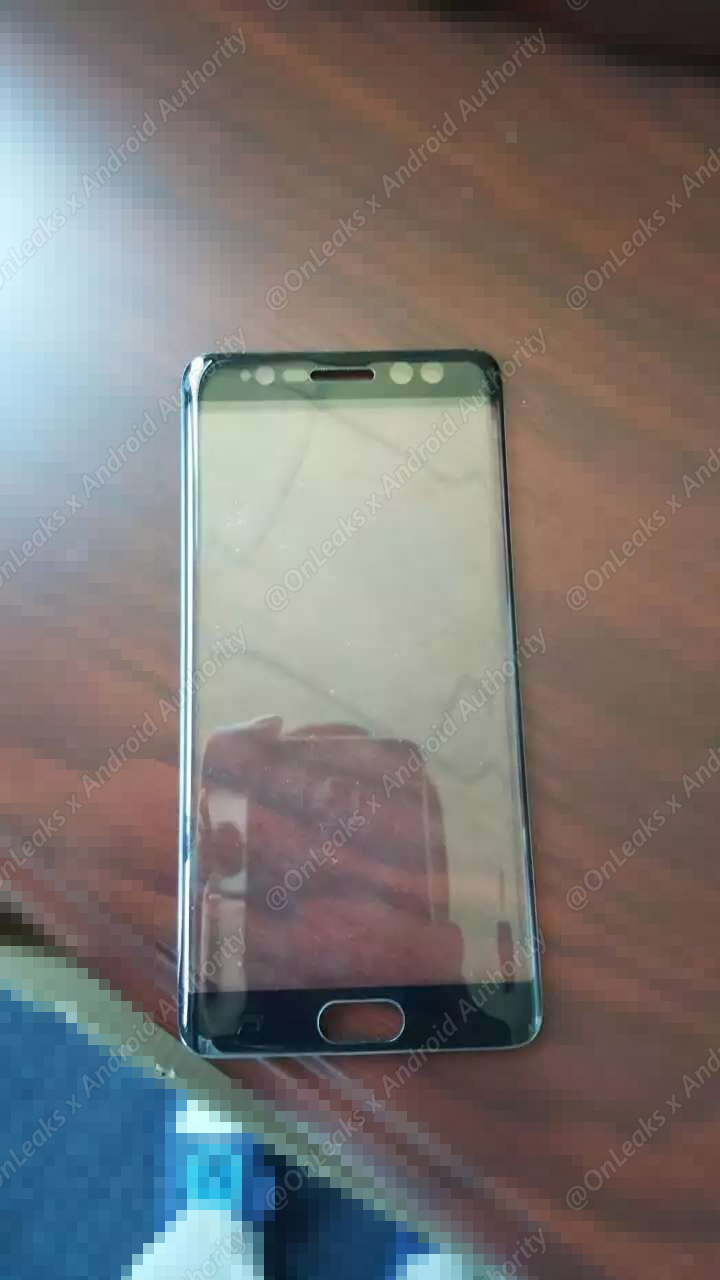
Courtesy of @onleaks and Android Authority, we can now look at leaked photos of the upcoming Note 7's front panel. As you can guess, we were most interested to see what the front panel reveals to us and delightfully, it reveals that the Note 7 will indeed sport the rumoured iris scanner that we have been hearing about for a while now. As @onleaks is usually dead accurate with their leaks, this is more news than rumor.
Additionally, the photos also confirm the 5.8-inch dual Edge display that rumors have been predicting for months now. This sits in perfectly with previous reports about the Galaxy Note 7, so it isn't really a surprise at this point. Another little detail that the leak reveals is that the Note 7 won't have enough space in the front to sport the Samsung logo like all Samsung smartphones have done in the past, on account of the three lenses required for the iris scanner to work. The South Korean OEM clearly wants to keep bezel space to a minimum, so this adjustment had to be made. Did you find the confirmation satisfying or do you not care for an iris scanner on your next device?
Author: Saikat Kar (tech-enthusiast)

If you wondering how iPhone 7, Galaxy S7 and LG G5 can compared, when none of these phones are released yet. But the currently available information about the Galaxy S7 and the LG G5 can help us conclude that for at least one more year, performance wise the iPhone will be superior than the Android phones.
Every year a new version of the iPhone comes out, and two things are always true:
- improved camera
- best CPU and GPU performance in the market.
While using it actually, new iPhone performs better although the competitors feature better hardware specifications.
The Galaxy S7 will be backed by Samsung's Exynos 8890 octa-core processor and Qulacomm's Snapdragon 820 SoC. The LG G5 will only get the latter variant .As per the benchmark tests, the comparison between these two CPUs shows that, the Exynos is better in single-core Geekbench tests (2282 vs. 1873), and the Qualcomm ship is speedier in multi-core testing (4979 vs. 5946).
These scores are less than the iPhone 6's score got in single-core tests (2490), and more in multi-core tests (4340). If Apple can achieve the same with the dual-core processor featured in the iPhone 6s, A10 chip will surely a thing to look forward to. Also taking into account the recently performed Qualcomm Snapdragon 820 performance test, Apple's A9 processor (present in iPhone 6s Plus) is superior than the other two processors.
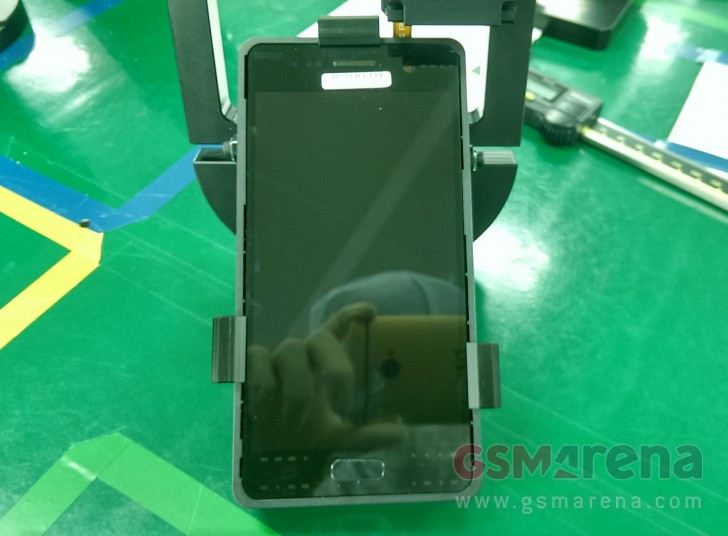
Although the Samsung Galaxy S7's supposed launch date is still about a month away, most fans are already aware of its rumoured specs. We may even have a pretty good idea about how it will look! To add to this "preview" of sorts, two new photos have been leaked. From the look of things, it seems that they were taken in a Samsung production unit itself.
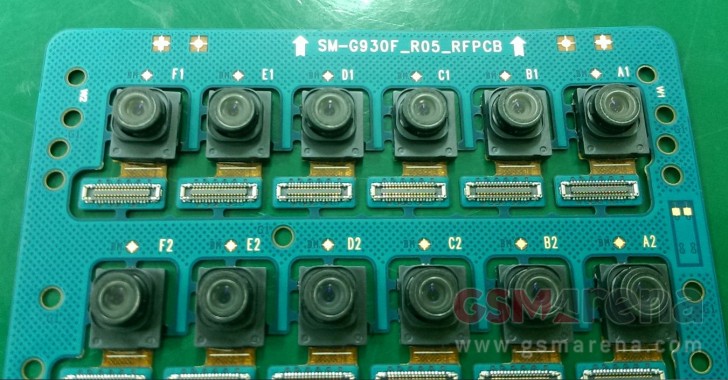
The first picture shows a total of twelve camera modules on a single factory board. Each of the modules has a number assigned to it that has been printed on the portion of the board that's right above it. On the top row, the modules are numbered from right to left alphabetically, starting with A1 and ending with F1. Similarly, on the bottom row, the numbers run from A2 to F2.
"SM-G930F_RO5_RFPCB" is printed on top of the board which confirms that these are indeed front camera modules for the S7 as SM-G930F was previously leaked to be the assigned codename for the Galaxy S7 Exynos version. The RO5 marking is probably there to indicate that this is the 5th revision for the modules. It looks like the new front camera will have its connector offset on the side, instead of being on its center like the Galaxy S6's front camera.
The Galaxy S7 is seen in its full bodied avatar in the next image, which has allegedly been shot with the first HTC One! Actually, it is not really full bodied as none of the design aspects which will make it to the final version are visible here. The picture simply shows a developer's version of the S7 being tested. Efforts have been made to even hide the brand name with a sticker right on top of the Samsung logo. The iconic Home and Back button designs however, clearly give it away.

The Samsung Galaxy S7 and S7 Edge were near-perfect devices on release, with super high resolution 2K displays, fastest processors, lightning quick fingerprint scanners and much more. But if one was allowed to nitpick, its 5-megapixel front camera might just stick out like a sore thumb. Is the 5-mp resolution going to get a bump this year? Frankly, we are not sure! On the positive side though, we now have a report from etnews that Samsung is going to cater to the selfie-freaks among us by adding autofocus to the front camera of the Galaxy S8-series.
We are well aware that an autofocus feature alone cannot really compensate for a low-resolution and now dated camera module, especially when compared to the likes of the LG V20 and the Google Pixel phones. Therefore, we are hopeful that Samsung will accompany the autofocus feature with an improved sensor as well. Given that Apple bumped up the resolution of the iPhone's FaceTime camera from 5-mp to 7-mp this year, the pressure is definitely on Samsung to raise its selfie-standards!
Saikat Kar (tech-enthusiast)
Just the other day, I was thinking that it's still too early to be seeing video leaks regarding the Galaxy Note 8 and today we have exactly that! Admittedly, it's not exactly a Galaxy Note 8 per se that we are seeing in the video, but it still is a pretty clear indication of how the next Note from Samsung will look like from the front. Before we talk any more about it, you need to check out the video first. Take a look and see what you think about it.
The front panels show that the Note 8 will sport the same design language as the S8+, but we expected that much. If you are worried about the authenticity about the video, we cannot guarantee that, but this much can be said that the chances of this one being a fake is almost next to nothing. Firstly, the design language is too similar to that of the S8+ for it to be a product of any other company. Secondly, no tampering has been done with the video as far as we can see. Now that we know how the front panel will look like, let's just hope that the final phone has a few better surprises waiting for us.
Saikat Kar (tech-enthusiast)

Oppo just released two new smartphones in the Reno4 series in China. The Reno4 and Reno4 belong to upper mid-range smartphones with some premium features. The main selling point for the phone is its powerful camera, embedded AI software for the optimized images and its weight. Yes, it is one of the slimmest phones you have ever watched.
The Oppo Reno4 Pro has a curved AMOLED display at the front and a 3D curved design at the back of the phone for better handling. Both phones use a triple camera system at the rear side, but the pro model has a more powerful setup. The Oppo Reno4 features a 48MP f/1.7 primary camera that comes with an 8MP 119-degree ultra-wide-angle lens, and a 2MP black and white sensor. The Reno4 Pro has the same 48MP camera but with an Optical image stabilization feature for without shaky-ness in images. The second camera lens is 12MP 120-ultra-wide-angle f/2.3 shooter and a 13Mp f/2.4 telephoto shooter with 5x optical zoom and 20x digital zoom.
They both have a laser focus sensor. Both variants come with Oppo\'s ultra-clear low light algorithm, which was developed within the company for more than a year. The new algorithm creates many clear and colorful videos even in low-light situations. Both phones have Oppo\'s video anti-shake 3,0 technology when using the ultra-wide-angle sensor for the front camera as well.
The new Reno4 models add a live HDR video mode and 21:9 custom movie shooting mode with manual parameter adjustment options which the company claims offer a more professional shooting experience. This paired with OPPO\'s Sloop video editor which features classic movie filters and soundtracks, you can produce high-quality videos right from your Reno4 smartphone. Both phones support up to 4K 30fps and up to 720p 240fps slow-motion video shooting from its back cameras. The front cameras are also capable of 1080p 30fps videography.
The Reno4 comes with a dual punch-hole design to house the front camera that is 32Mp primary lens and a 2MP secondary lens. The pro model comes with one single 32MP front selfie shooter. Both models have a stabilization algorithm for front videos and AI smart beauty algorithm known as face repair that removes blemishes and scars to some extend. Both phones have Snapdragon 765G processor with Adreno 620GPU with liquid cooling to ensure that phones don\'t overheat with intensive tasks. Both phones come with 5G connectivity support. The Reno4 has just 8GB of RAM with 128GB and 256GB storage options, but the Reno4 Pro includes a top-end 12GB RAM and 256GB ROM variant too.
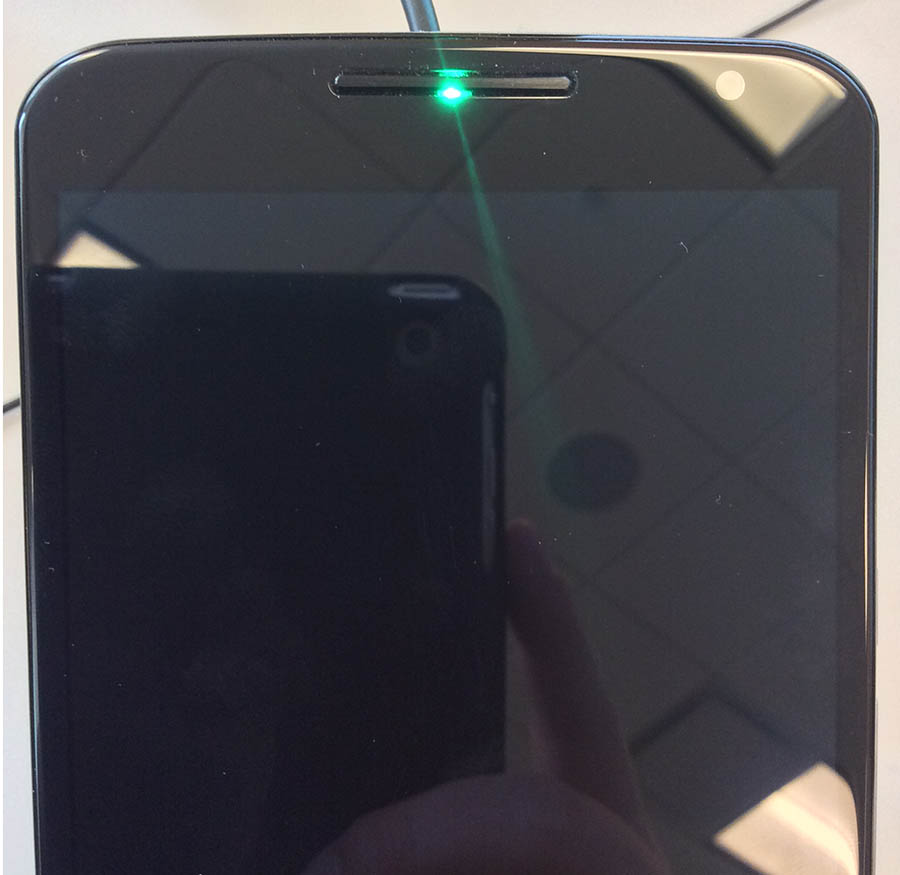
Google always puts an LED notification lights on its Nexus devices, but it doesn't always put them to use. In fact, Google doesn't always even let anyone know that the LED exists in the device at all. That's what has happened with the Nexus 6, which it turns out has its own Hidden LED notification light... SUPRISE!, you can't do much with it unless you're a root user, thought!
It turns out that the Nexus 6 has an LED light in a somewhat odd place behind the top speaker grille. It is a full RGB LED light, but as noted before, you can't use it unless you have rooted your system.
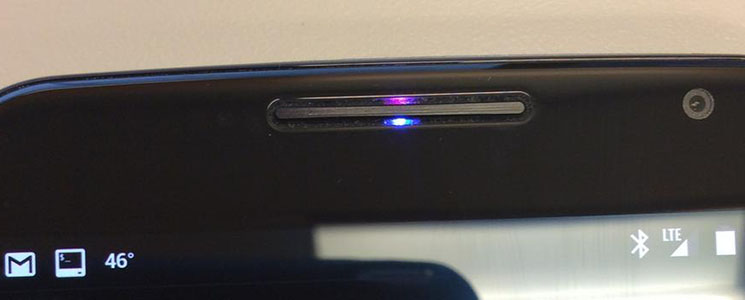
And, even then, the options are basically non-existent because there is no software to properly take advantage of it. Light Flow can't interact with it correctly, and reports are saying no matter what color you choose with it, the LED displays green.
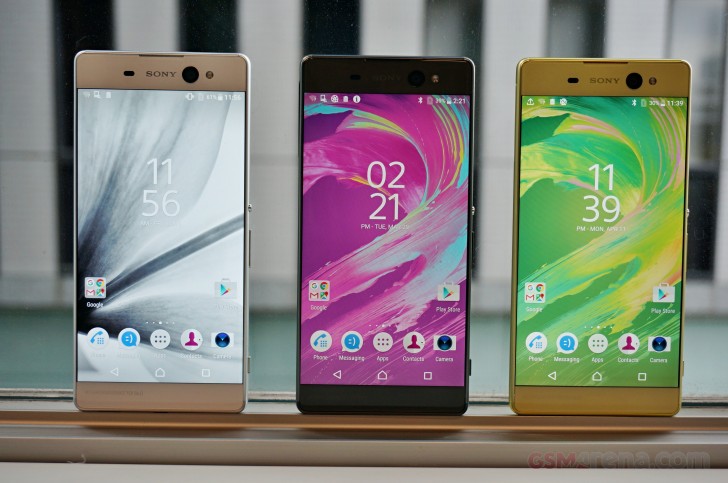
The Sony Xperia XA has just been made official by the Japanese OEM and from what we know so far, it's going to be a mid-range device. The phone looks beautiful thanks to the metal build and color options (Black, White and Lime Gold), but it isn't a slouch under the hood either. The Mediatek Helio P10 SoC will power the device, supported by 3GB of RAM and managed by Android 6.0.1 Marshmallow. The in-built memory is nothing to write home about as it's limited to 16GB, but fortunately, there is a micro-SD card slot on the XA Ultra.
What we found a bit strange is Sony's use of only a 2,700mAh battery to power the giant 6-inch Full HD bezel less display sported by the Ultra. Considering the screen size and the demanding SoC, the battery seems insufficient. However, Sony doesn't agree and has even gone on to declare that the Ultra will last for two consecutive days after a full charge. It does support quick charging and according to Sony, charging the smartphone for only ten minutes will be sufficient to use it for the next five and a half hours.
The highlight of the device is its front camera, which is rumored to be the best in class sensor from Sony. The 16-megapixel "selfie" cam has optical image stabilization, gesture shutter and even a flash for snapping selfies in dark surroundings. Not to be outdone, the rear camera with hybrid autofocus comprises of a beastly 21.5-megapixel sensor. If you are excited about the Xperia XA Ultra, it is due to be launched in July, but no details about the price of the device have been made public yet. Stay tuned to know more.
Author: Saikat Kar (Tech-journalist and enthusiast)
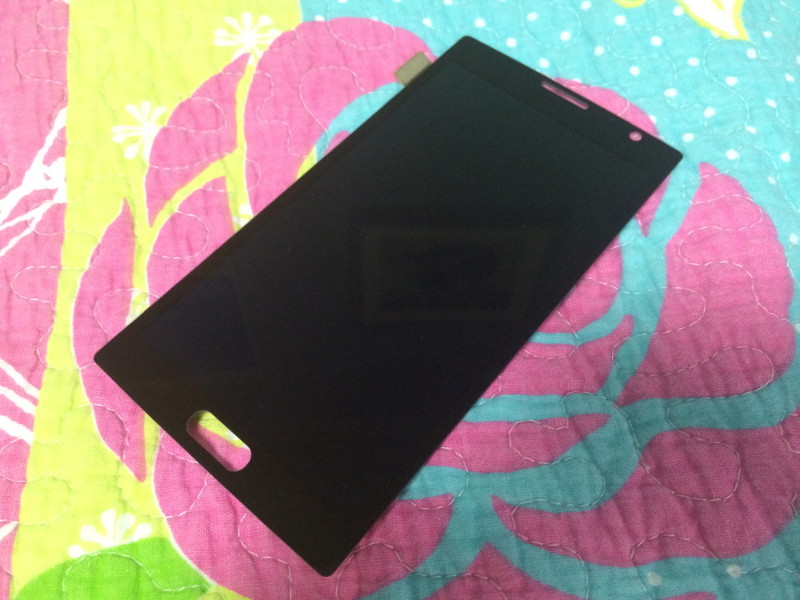
Today we brought you the first photo showing the Samsung Galaxy Note 4 to feast your eyes. It's just the front panel of the phablet that got pictured.
It seems to have undergone a photo shoot somewhere in the wild, and it shows a design that's extremely similar to that portrayed by the earlier images. The images source has been taken down after 2 hours.
The cutouts for the front camera, speaker, and Home button are all where you'd expect them to be, and you can see where the capacitive touch buttons will go alongside the Home button too adhering to Samsung's standards in terms of placement.

For the last week or so, Samsung has been rolling out a brand new update with the April security patch, and unknown to many, it also contains a much needed camera update.
Once you have installed the update via OTA or manually, the default front camera FOV (Fielf-of-View) changes to 68-degrees, but can easily be changed to the 80-degree wide-angle view if you want, which was the only option for the selfie-cam prior to the update. While the wide-angle lens is always going to be more useful for group selfies, the narrower angle is more suited for taking actual selfies with you as the main subject.
The update was first released in Germany, but it has now made its way into other parts of Europe such as Austria, Italy, Spain, France, Netherlands and UK. Thailand and Cambodia are also getting the same update in Asia.
In addition to the security patches of April from Google and Samsung, this package also enables users to set a timer for the night-mode to come on automatically on the Note 9. All of these were already present on the Galaxy S10, but now the Note 9 and the S9-series has them too.
Saikat Kar
© 2023 YouMobile Inc. All rights reserved






